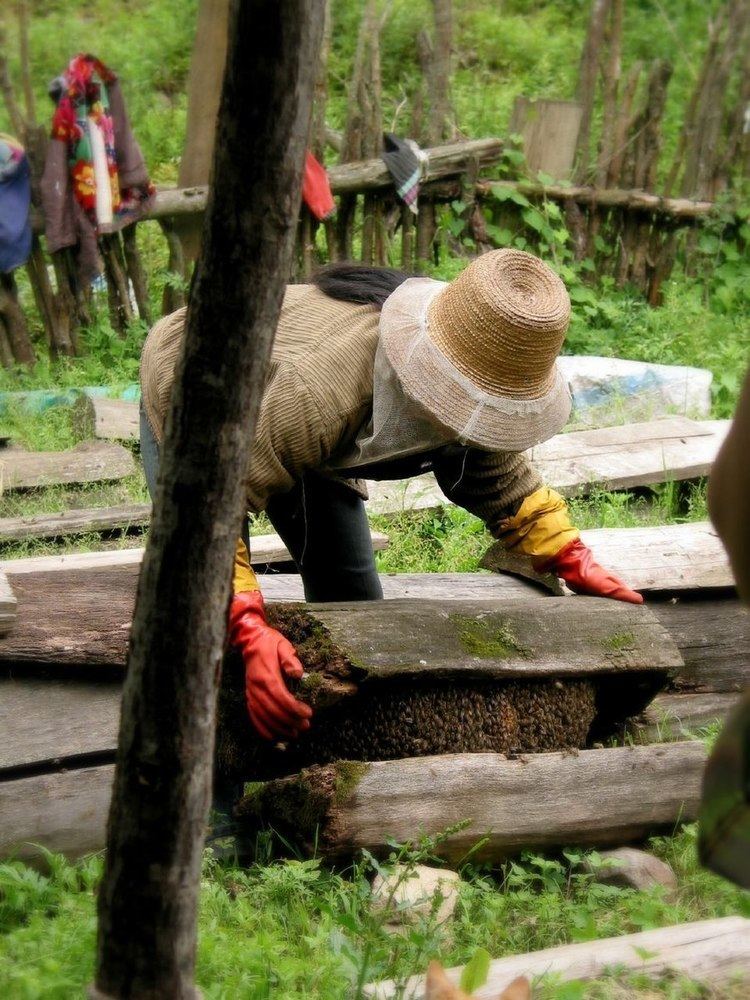 | ||
The Baima people (simplified Chinese: 白马人; traditional Chinese: 白馬人; pinyin: Báimǎ rén; literally: "white horse people"), also called Baima Tibetan (simplified Chinese: 白马藏人; traditional Chinese: 白馬藏人; pinyin: Báimǎ Zàngrén), is a subgroup of Tibetans living in the southeast of Gansu province and the northwest of Sichuan province of China, especially in Pingwu County, Jiuzhaigou County of Sichuan and Wen County of Gansu.
Like the Songpan (松潘) people of Tibet, Baima people call themselves Bai. Unlike the Tibetan language, the Baima language ordinarily does not use a written script, although a hieroglyphic system is used in religious practice. In religion, they still keep ancient nature worship and totem worship, which practices were later influenced by the prehistorical Tibetan religion of Bon (苯教), and in some degree they also believe Buddhism and Daoism, but there are no temples or lamas (monks). To many of the Baima, the Mountain God is the highest god. The most important religious event for them is Caogai (曹蓋, which means domino in Baima language) dance.
The Baima people are said to be the descendants of Baima Di (白馬氐) and after Songtsän Gampo established the Tibetan empire they gradually became part of the Tibetan people. The Di (氐) were an ancient large ethnic group living in west China who were associated with the Qiang (羌), also called Di Qiang (氐羌). The change from their original Di language to Amdo Tibetan probably took place in the 7th century CE. The area Baima people live in is the region that was previously called Jiandi Dao (湔氐道) before the Tibetan empire was established.
